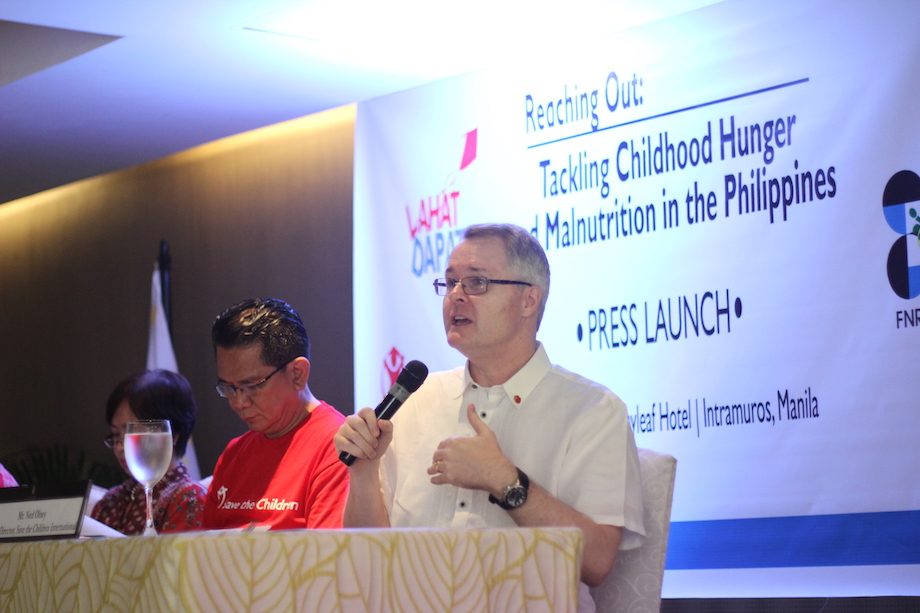SUMMARY
This is AI generated summarization, which may have errors. For context, always refer to the full article.

MANILA, Philippines – Filipino children are more malnourished than ever.
The Philippine chronic malnutrition rate among children aged 0-2 was at 26.2%, the highest in 10 years, according to a recent survey by the Food and Nutrition Research Institute (FNRI) of the Department of Science and Technology (DOST).
FNRI, together with the Save the Children Organization, presented its latest report on child hunger and malnutrition on Tuesday, April 19.
Based on FNRI’s data from 2015, the Philippine chronic malnutrition rate among children aged 0 to 2 was at 26.2%, the highest in 10 years. (READ: PH fails to halve child malnutrition within 25 years)
Chronic malnutrition, or stunting rate for children under 5 years old, was at 33.5%, up by 30.5% from 2013.
From 2013 to 2015, 10% of the stunting children increased to an average of 40%, and is expected to increase in 2016.
Ned Olney, Country Director of Save the Children, stressed on how the recent findings of FNRI-DOST on stunting is becoming a major concern. (READ: 12M of stunted children in ASEAN live in PH, Indonesia – report)
“The concerning data of FNRI is actually the worst increase in stunting in the past 25 years,” said Olney. (READ: Why you should care about stunting)
Save the Children Health and Nutrition Advisor Armado Parawan, meanwhile, explained that these figures primarily come from the poorest families.
“The latest national data also show that children born to the poorest mothers are thrice (as) likely to suffer from stunting. This means that we need to double our efforts to ensure that nutrition-related policies and programs reach the most vulnerable,” he said.
“It’s not that they [the government] are doing nothing,” said Dr Cecilia Cristina Santos-Acuin, a chief science research specialist at FNRI-DOST.
“They are doing so many different things in different ways and not all of them are effective ways.”

“Save the Children knows that the first two years of life is considered the critical ‘window of opportunity’ for a child’s optimal growth and development,” Parawan said.
He also noted that any damage caused by stunting or chronic malnutrition during this period is irreversible.
The children’s group has launched the Community Management of Acute Malnutrition (CMAM) project to help decrease malnutrition and provide maternal care through public awareness, proper nutrition, and sustainable solutions. The initiative has been introduced in the national capital region, starting in Navotas City, following its successful implementation in Visayas and Mindanao.
“Hunger, malnutrition is a man-made problem,” said Olney, noting that “we create this situation and it’s completely preventable.” – Rappler.com
Nico Aquino is a Rappler intern from Xavier University-Ateneo de Cagayan.
Add a comment
How does this make you feel?
There are no comments yet. Add your comment to start the conversation.